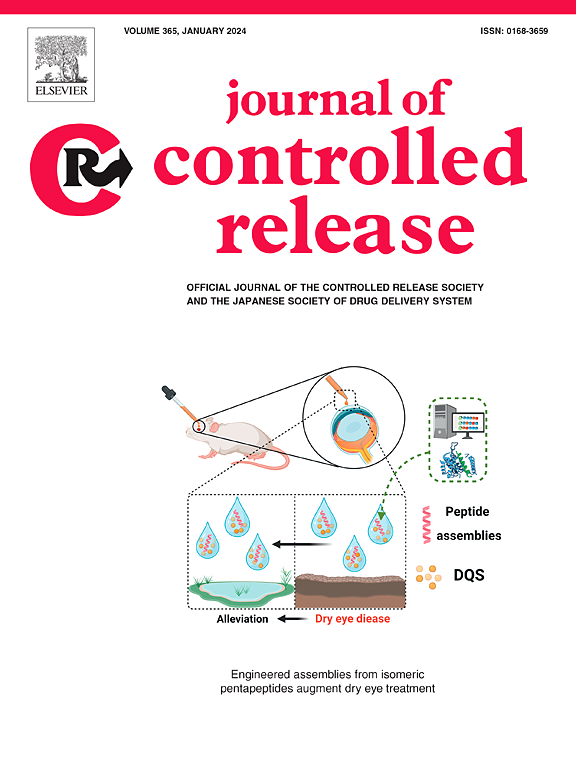Fate reversal: Exosome-driven macrophage rejuvenation and bacterial-responsive drug release for infection immunotherapy in diabetes
IF 10.5
1区 医学
Q1 CHEMISTRY, MULTIDISCIPLINARY
引用次数: 0
Abstract
Superficial surgical site infection (SSI) is a significant risk factor for the development of periprosthetic joint infection (PJI), particularly in diabetic patients. A high-glucose microenvironment is observed to compromise phagocytosis by inducing cellular senescence, which leads to impaired antibacterial immune function. Exosomes derived from umbilical cord stem cells (H-Exos) can reverse the immunosuppressive microenvironment by rejuvenating senescent cells, thereby terminating excessive, persistent, and ineffective inflammatory responses. Thus, a novel exosome-based immunotherapeutic antibacterial strategy to reverse fate is proposed. Vancomycin & lysostaphin-loaded exosomes are incorporated in a customizable microneedle patch (ExoV-ExoL@MN) for controlled release, enabling tailored treatments for diverse clinical scenarios. While rejuvenating macrophage senescent phenotype, the antibiotics encapsulated within exosomes can be responsively released by the hemolysin secreted by bacteria, triggering rapid bacterial killing. Post-infection clearance, they induce a shift from M1 to M2 macrophage polarization, thereby enhancing anti-inflammatory and reparative responses. Furthermore, the components can be mixed on demand and at any time, allowing for real-time customization and fabrication directly at the clinic (fabrication@clinic). This strategy reverses the immunosuppressive microenvironment by rejuvenating senescent macrophages and effectively combats bacterial invasion into deep tissues through bacteria-responsive antibiotic release, providing a promising approach for preventing and treating SSI-induced PJI.

求助全文
约1分钟内获得全文
求助全文
来源期刊

Journal of Controlled Release
医学-化学综合
CiteScore
18.50
自引率
5.60%
发文量
700
审稿时长
39 days
期刊介绍:
The Journal of Controlled Release (JCR) proudly serves as the Official Journal of the Controlled Release Society and the Japan Society of Drug Delivery System.
Dedicated to the broad field of delivery science and technology, JCR publishes high-quality research articles covering drug delivery systems and all facets of formulations. This includes the physicochemical and biological properties of drugs, design and characterization of dosage forms, release mechanisms, in vivo testing, and formulation research and development across pharmaceutical, diagnostic, agricultural, environmental, cosmetic, and food industries.
Priority is given to manuscripts that contribute to the fundamental understanding of principles or demonstrate the advantages of novel technologies in terms of safety and efficacy over current clinical standards. JCR strives to be a leading platform for advancements in delivery science and technology.
 求助内容:
求助内容: 应助结果提醒方式:
应助结果提醒方式:


